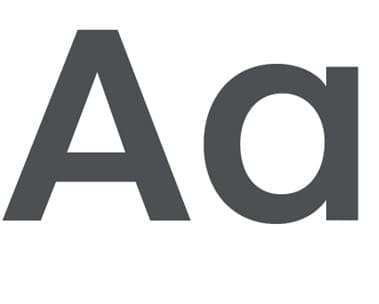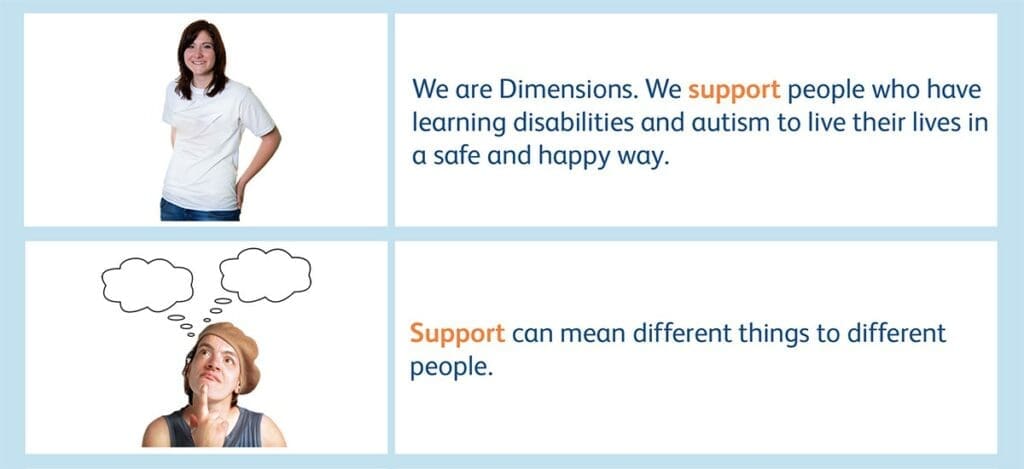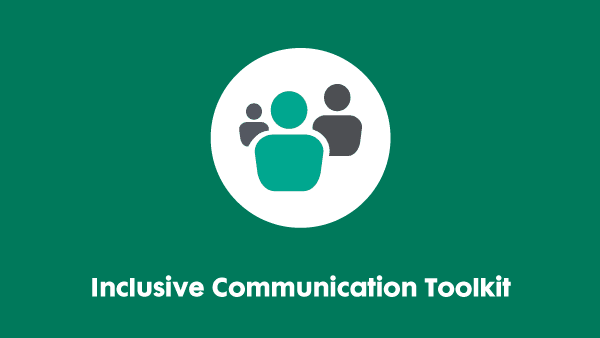Last updated: 12 February 2025
How to make terms and conditions accessible
Research from Deloitte suggests that around 90 per cent of people agree to terms and conditions without actually reading them, with many people put off by the length and complexity of the statements. But there are additional communication barriers involved for some disabled consumers
The legal nature of service agreements may make some businesses concerned about attempting to offer more accessible versions, but the need for transparency should also be considered. It is also important to remember that making information more accessible doesn’t just benefit disabled people but benefits everyone.
About this resource
This resource is for:
- Anyone involved in writing terms and conditions and drafting contracts as well as anyone who works with internal or external legal teams to do so.
- Those working in customer service or customer engagement roles.
- Web teams.
- Anyone interested in disability and inclusion.
In this resource, we look at the case for making contracts and service agreements more accessible. We also discuss commons barriers that some disabled people experience when accessing terms and conditions. We also offer suggestions on how these can be overcome through the use of accessible design, web layout and plain English. At the end of this resource, you will find links to some other useful resources.
The case for accessibility
A study published in 2016 by the European Commission into consumers’ attitudes to terms and conditions found that there are benefits for organisations that seek to make their ‘small print’ more accessible and transparent. It also highlighted the potential legal risks of overlooking this area of customer communication.
“traders have a commercial and legal interest in keeping T&Cs short, simple (understandable) and, above all, fair”
The European Commission
The study made the following policy recommendations and observations:
- Terms and conditions should be standardised and presented in a simple and short format to improve readership. They should also only contain the most relevant information.
- More consumers indicated that they had read and understood the terms and conditions when they were simplified and shortened.
- Consumers trusted simple and short terms and condition statements more than long and complex ones. Consumers also felt more satisfied with the content and less frustrated while reading them.
- Traders need to present a list of information in a clear and comprehensible manner before the consumer is bound by the contract. This information needs to be actively presented to consumers and cannot be buried in the terms and conditions.
Terms and conditions: What are the barriers for disabled people?
Here are some of the common barriers that disabled people may experience when accessing terms and conditions and some of things you can do to overcome them.
Inaccessible font size and font choices
The term ‘small print’ sums it up well. Terms and conditions which are written in a font size of less than 12 point will be difficult for many people to read. A 12 point font is regarded as the minimum at which people can read text comfortably. People with sight loss or a vision condition may require a font size of 18 point or bigger.
The font you choose is also important. Sans serif fonts, such as ‘Arial’ and ‘Calibri’ are widely considered to be easier for the brain to read than more complex fonts, such as ‘Times New Roman’. There are also specialist fonts, such as ‘dyslexie’, which have been developed with people with dyslexia in mind.
Use of capital letters
Capitalising large sections of text is often used to emphasise important information and regularly used in terms and conditions. As most of us have learnt to read using sentence case, capitalised text often takes us longer to read. Capitalised text can be a particular barrier for people with dyslexia and people with learning disabilities.

Text heavy layout
Terms and conditions are often long and text heavy. This can make them difficult to follow for people who prefer more visual communication, such as some people who are neurodiverse. It also makes them hard to navigate for anyone who cannot easily skim read, such as a customer who uses a screen reader to help them access information.
Screen readers are used by many disabled people, including people who are blind or who have sight loss. Screen readers read out text.
Use a logical layout and break up large sections of text using headers, sub heads, bullet points and lists.
Complex, legal language
Contracts are often written in formal legal language which can be inaccessible to anyone outside of the legal profession. Jargon, acronyms and complex sentence structure can be particularly difficult to understand for people with lower literacy levels. Write in plain English wherever possible. Remove as much jargon as you can and include a glossary to explain any unfamiliar terms.
Limited alternative formats
It is difficult to make a piece of information accessible to everyone if only available in one format.
Terms and conditions are often only offered in a written format. This can make them difficult to access for people who prefer to receive information in alternative formats, such as audio, British Sign Language, or Easy read.

Consider offering summaries of your terms and conditions in alternative formats.
Signing the terms and conditions
Some people with disabilities that affect their motor skills will find it difficult to sign a printed or digital document. Consider using buttons within your digital document, which can be selected or ticked to indicate agreement.
Make sure all buttons are properly tagged and labelled with text. Do not relying on colour, alone, to differentiate between buttons. Check there is sufficient colour contrast between the text and the background colour of the button.
A new approach
Thankfully, many organisations are beginning to recognise the need to make their terms of service more accessible to customers.
We would be very interested in hearing from you if your organisation has completed any work in this area.
Further information
The following is a short list of resources, articles, and examples, which you may find useful.
- A to Z of legal terms, financial terms and pensions terms by Plain English Campaign
- ‘Why we tore up our terms and conditions’ by Revolut
- ‘What are plain language contracts’ by Juro
- ‘Plain English contracts are on the rise’ published by Forbes
- Terms of use for the BBC’s digital service
Blog: Who reads the small print?
By Bela Gor, Head of Content, Legal and Events at Business Disability Forum
How many of us actually read the terms and conditions before we agree to buy? Legal terms and conditions whether in old fashioned print format or online are probably some of the most inaccessible communications there are in today’s world, not just for disabled people but for everyone.
The proof
Amusing stories abound of companies who have inserted clauses just to prove that no one reads Ts & Cs before accepting them, especially online when you have to click to agree before you get to play on your new phone, social media account or streaming service. In 2017, 22,000 people who signed up for free public Wi-Fi agreed to 1,000 hours of community service including cleaning toilets and “relieving sewer blockages”. A few years earlier six Londoners agreed to a “Herod” clause in exchange for Wi-Fi access and agreed to “assign their first-born child for the duration of eternity”. That clause is unenforceable by the way because it isn’t legal to sell children in London.
More positively, Georgia high school teacher Donelan Andrews won a $10,000 reward after she closely read the terms and conditions that came with a travel insurance policy she bought for a trip to England. Squaremouth, a Florida insurance company, had inserted a clause promising a reward to the first person who emailed the company.
An agreement between two parties
So far so amusing but does it matter? Well yes because all of these are contracts. Contract law varies from country to country, but the basic principles are pretty much the same as they are in the UK. A contract is an agreement between two parties in which one makes an offer of something e.g. a bar of chocolate, in exchange for something, usually money, but sometimes services. When the offer is accepted on those terms there is a contract. In the UK contracts don’t even have to be in writing in order to be legally binding with some exceptions such as contracts for land. Every time you buy a coffee in a café or a bar of chocolate in a shop you are entering into a contract, sometimes wordlessly. These contracts have simple terms and conditions which are clearly communicated.
But what about more complex contracts such as those for aforementioned mobile phone, social media or streaming services which often contain a great deal of legalese and words like “aforementioned”? A contract becomes effective once an offer has been accepted and consideration i.e. payment has been made or a promise of a payment has been made. But to be enforceable the terms of the offer must be communicated to the person accepting the offer and the acceptance must match exactly the terms of the offer. More simply the person accepting the offer must know exactly what it is that they are agreeing to by paying their money.
An enforceable contract?
What does this mean in terms of accessible and inclusive communications for disabled people? Well, if your customer or employee cannot read all the terms and conditions because they are not in a format that they can access e.g. literally small print that cannot be read via a screen reader or if they cannot understand the terms because the language is too complex, there is a risk that the contract you thought you had with them isn’t enforceable. That means that the contract or part of it might not stand up in court if it was challenged.
On a more positive note, wouldn’t it just be helpful to everyone if companies made the important parts of a contract really easy to read and understand? Companies do have to protect themselves and their product but draconian clauses which the end user has no option but to accept because otherwise they don’t get the service at all (it’s not like you can negotiate on clause 16.2.1) might sooner or later backfire if courts decide they aren’t fair.
If your organisation has done any work to make its terms and conditions more accessible then do get in touch. We would love to hear from you.
Seeto our resource ‘How to make terms and conditions accessible’ above to find out more on this topic.
Examples and useful resources
Best practice
We are looking to develop this section of the toolkit as work in this area progresses. If your organisation has examples that it would like to share, then do let us know by emailing enquiries@businessdisabilityforum.org.uk.
Please do come back and visit this section of the toolkit soon, for updates.
Useful resources
Here is a list of resources, blogs, articles and examples, which we have found useful on the topic.
Guides
The Plain English Campaign has produced a series of useful guides on making legal and financial terminology easier to understand.
- Plain English Campaign, The A to Z of legal phrases
- Plain English Campaign, The A to Z of financial terms
Blogs
A blog on creating a Plain English summary of terms and conditions, by Google:
A blog on taking a new approach to terms and conditions, by Revolut:
A blog on writing terms and conditions, by Termfeed:
- Termsfeed, How to write terms and conditions
Articles
An article on the rise of plain English contracts, published by Forbes:
An article on how many people read the terms and conditions, published by The Guardian:
An article on whether complex terms and conditions are legally binding, published by The Conversation:
- The Conversation, If small print ‘terms and conditions’ require a PhD to read, should they be legally binding?
Examples of making small print accessible
A plain English summary of Climb Creative’s terms and conditions:
- Climb Creative, Terms and conditions
If you require this content in a different format, contact enquiries@businessdisabilityforum.org.uk.
© This resource and the information contained therein are subject to copyright and remain the property of the Business Disability Forum. They are for reference only and must not be copied or distributed without prior permission.
